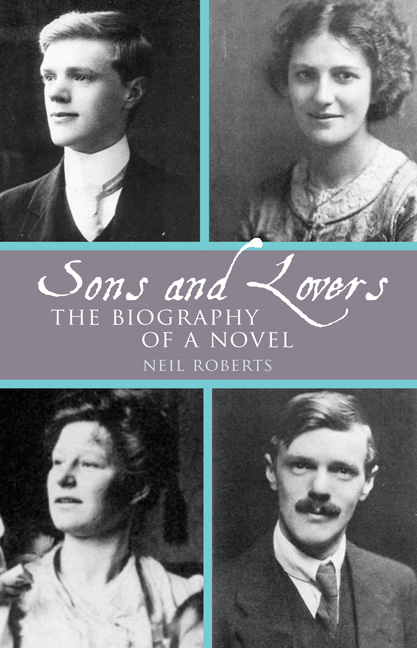Book contents
- Frontmatter
- Dedication
- Contents
- List of Abbreviations
- List of Figures
- Introduction
- 1 Bert and Jessie, 1901–1909
- 2 ‘The Saga of Siegmund’ and the Test on Lawrence, 1909–1910
- 3 ‘Paul Morel I’ and the Death of Lydia Lawrence, August–December 1910
- 4 Betrothal and ‘Paul Morel II’, January–October 1911
- 5 Re-enter Jessie, 1911–1912
- 6 ‘The death-blow to our friendship’, ‘Paul Morel III’, February–June 1912
- 7 From ‘Paul Morel’ to Sons and Lovers, July–November 1912
- 8 Epilogue, 1912–1913
- Bibliography
- Endnotes
- Index
Introduction
- Frontmatter
- Dedication
- Contents
- List of Abbreviations
- List of Figures
- Introduction
- 1 Bert and Jessie, 1901–1909
- 2 ‘The Saga of Siegmund’ and the Test on Lawrence, 1909–1910
- 3 ‘Paul Morel I’ and the Death of Lydia Lawrence, August–December 1910
- 4 Betrothal and ‘Paul Morel II’, January–October 1911
- 5 Re-enter Jessie, 1911–1912
- 6 ‘The death-blow to our friendship’, ‘Paul Morel III’, February–June 1912
- 7 From ‘Paul Morel’ to Sons and Lovers, July–November 1912
- 8 Epilogue, 1912–1913
- Bibliography
- Endnotes
- Index
Summary
Imagine these four writing scenarios. A young elementary school teacher, living in lodgings in a London suburb, guilty about having seduced and abandoned the love of his life, now burdened also with the knowledge that his beloved mother is dying, struggles in the evenings, after correcting his pupils’ work, to write a novel that is of deep personal importance to him. The following year, grieving for his mother's death and engaged to another woman whom he increasingly feels to be unsuited to him, he begins the task again, and again fails to complete it. The same young man, having survived a near-fatal illness, left his job and ended his engagement, is back with his family in the Midlands town where his novel is set, locked, through his writing and her response to it, in a final struggle with his first lover about the meaning of their relationship, and beginning a new love affair that will transform his life. Finally, with his new lover, a woman from a background utterly foreign to him and the world of his novel, he rewrites the book again in a little lakeside town in Italy.
Writing was the centre of Lawrence's life. It is notoriously difficult to represent the activity of writing in biography. The writing is the reason why the biography is written at all, but it often seems to go on in some timeless, spaceless realm outside the life itself. It is possible to read some Lawrence biographies—even an otherwise excellent one such as Brenda Maddox's The Married Man: A Life of D.H. Lawrence—without being aware that during the crucial months February to April 1912, when he met Frieda, and September to November of that year, when they made their first home together in Gargnano, Lawrence was spending most of his time writing the third and final drafts of Sons and Lovers. Certainly no one reading these books will learn that Jessie Chambers, the most intimate friend of his youth and the original of Miriam Leivers, crucially intervened in the novel's composition by advising Lawrence to stick closer to autobiographical fact, wrote her recollections of important episodes on which he based parts of his narrative, made criticisms of the third draft to which he responded and herself wrote episodes that Lawrence incorporated with little revision.
- Type
- Chapter
- Information
- Sons and LoversThe Biography of a Novel</I>, pp. 1 - 6Publisher: Liverpool University PressPrint publication year: 2016



